Source:Xinhua 2024-02-25
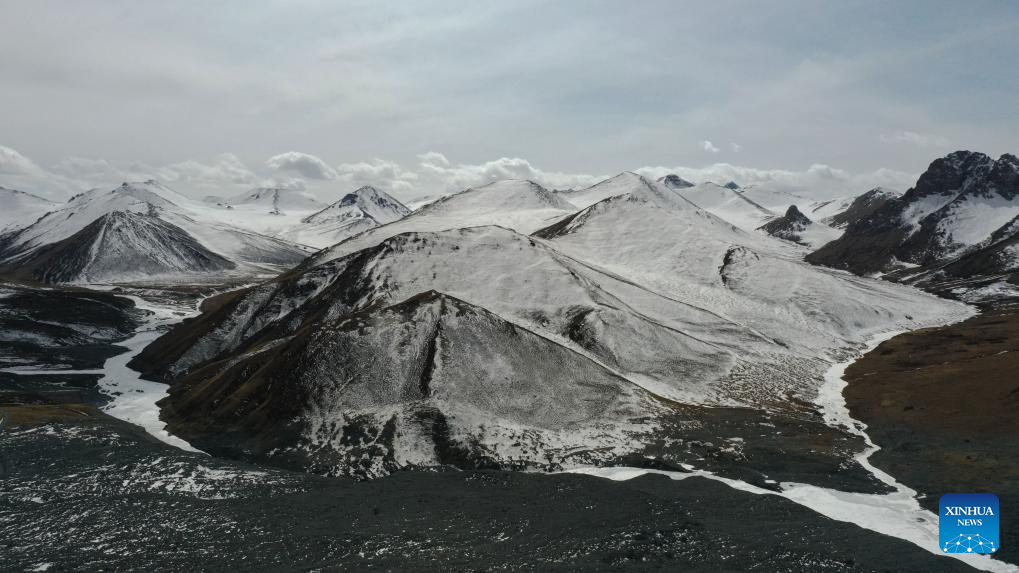
An aerial drone photo shows a view of Mount Anyemaqen in the Golog Tibetan Autonomous Prefecture of northwest China's Qinghai Province, March 9, 2023. (Xinhua/Chen Jie)
XINING, Feb. 24 (Xinhua) -- Tenzin Dargye, a herder living at the foot of a snowy mountain on the Qinghai-Xizang Plateau, also known as the "roof of the world," knows the threats posed by climate change all too well.
"When I was a child, there was a river in front of my house. The water level could reach my knees in the summer, but now the river has disappeared," said the 37-year-old, who lives by Mount Anyemaqen in Xueshan Township, which is located in the Golog Tibetan Autonomous Prefecture of northwest China's Qinghai Province.
Anyemaqen is the largest snowy mountain in the source area of the Yellow River. It has more than 40 glaciers, which are important parts of the cryosphere and indicators of climate change.
The mountain also has cultural meaning. "Anyemaqen is regarded as a sacred mountain by us Tibetans," Tenzin Dargye said. "Seeing the snowy mountain melting bit by bit, we felt that we should do something."
Resolute, he joined a glacier monitoring team of some 10 people. For over 10 years, the initiative has grown into an environmental protection association with nearly 50 members, the majority of whom are local herders. They survey the glaciers under the guidance of scientists, monitor wildlife and collect waste.
HERDERS' INITIATIVE
Tenzin Dargye said that more than 10 years ago, ice avalanches occurred and the glaciers near his home were generally in a state of retreat.
As the melting accelerated, disasters caused by ice avalanches continued to threaten the living environment of herders. In response, some began amateur observations of glacier retreat.
They found that the glaciers would begin melting around the middle of May, and the melting would stop when temperatures dropped in October. They then agreed that the glaciers should be measured on May 15 and Oct. 15 every year.
Since 2010, the herders have continued to gather at the same spot on the two dates each year to record the location of the snow line.
But this has been no easy task. Without practice or experience to follow, they use a large stone near the end of the glacier tongue as their starting point and calculate the distance between the stone and the snow line.
Without professional measurement apparatus, younger herders pull tape to measure the distance. They record the date and retreat distance on a rock with paint while older herders take notes for the scientists.
Their work can be risky at times. In October, when the gravel roads are blanketed with snow, the herders can become stuck in hidden gaps until their companions help them out.
"Some villagers have said the work that we do on our own has little value," said Tenzin Dargye.
Karjin, another member of the herder team, said that despite such opinions, his octogenarian mother has always been supportive. "My mother said that as we grew up under the snowy mountain, we can't do nothing."
BROADER ENVIRONMENTAL PROTECTION EFFORTS
As it has year-round snowy mountain scenery, Xueshan Township has gradually become a tourist hot spot. But this popularity has had an adverse impact on the local environment.
"Many tourists come to see the glaciers in the summer, and some litter or drive off-road vehicles to cross the glaciers," Karjin said.
In 2015, a local environmental protection association was established, performing various tasks such as glacier and wildlife monitoring, and discouraging bad tourist behaviors.
At the association's invitation, non-profit organizations have been invited to hold lectures on environmental protection in Xueshan Township to attract more people to participate in local ecological protection efforts.
He Xiaobo, a researcher at the Northwest Institute of Eco-Environment and Resources, Chinese Academy of Sciences, visited Mount Anyemaqen in 2023. After learning about the methods the herders were using to monitor the glaciers, he instructed them on how to monitor the glaciers more precisely on the spot.
"Monitoring is basic work to protect the glaciers," he said. "With the previous monitoring data, we can understand the relationship between the glaciers and climate change better, and then we can analyze the glacier evolution."
He said that in the future, his team will work to provide data support for glacier research and geologic disaster prevention and control work.
The herders have gained a deeper understanding of the glaciers' changes under the guidance of the scientists. "The protection of glaciers can't consist of monitoring alone. We will try to avoid getting too close to glaciers and help more people understand their importance, and the importance of snowy mountains," Karjin said.
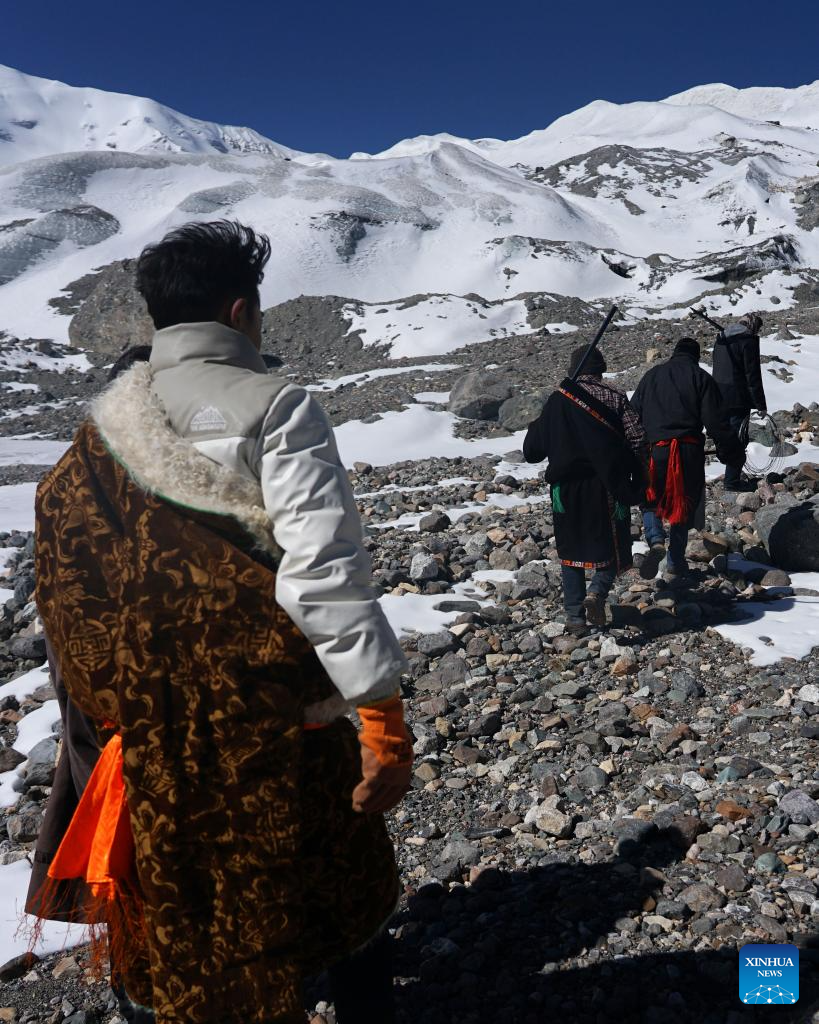
Glacier monitoring team members prepare to monitor a glacier in northwest China's Qinghai Province, March 8, 2023. (Xinhua/Chen Jie)
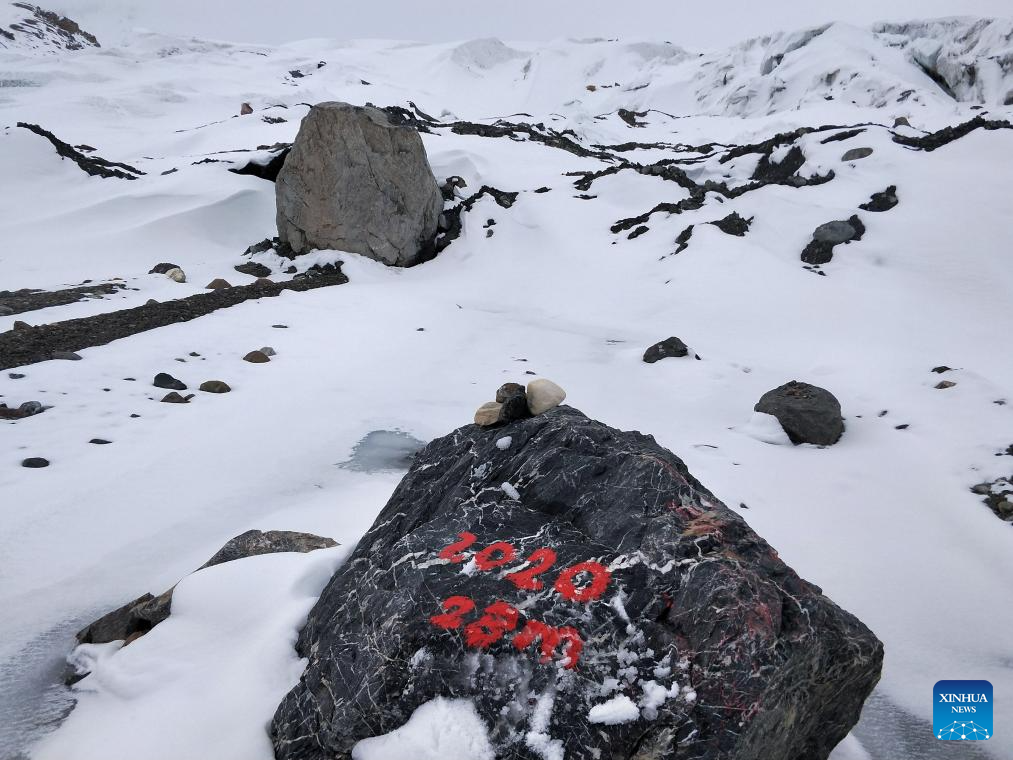
This file photo shows a rock marked by glacier monitoring team members in northwest China's Qinghai Province in 2020. (Xinhua)
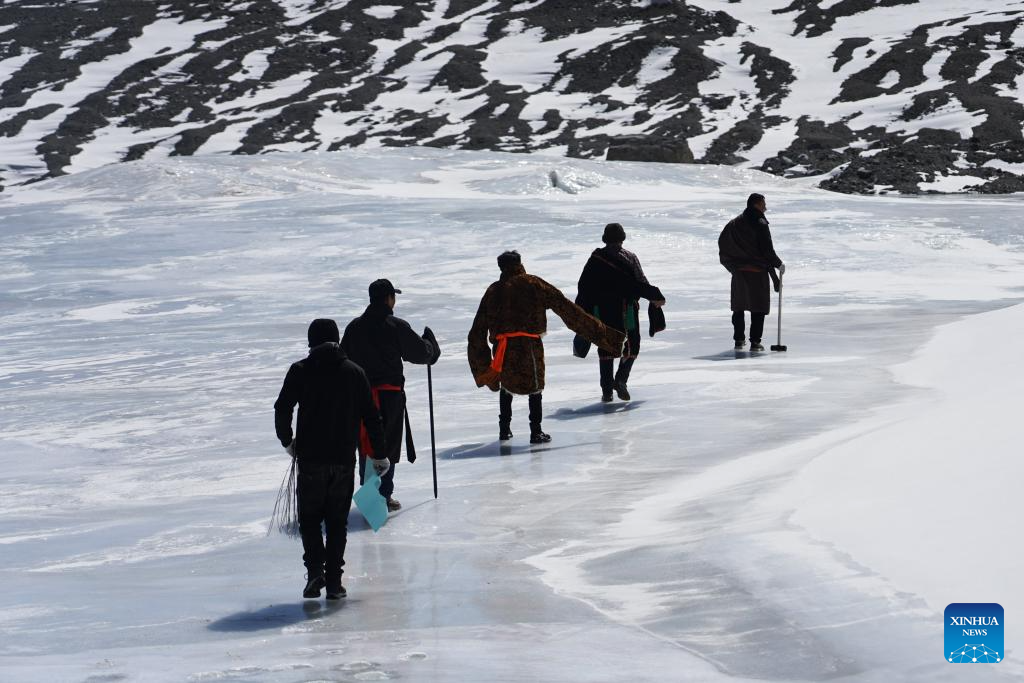
Glacier monitoring team members prepare to monitor a glacier in northwest China's Qinghai Province, March 8, 2023. (Xinhua/Chen Jie)
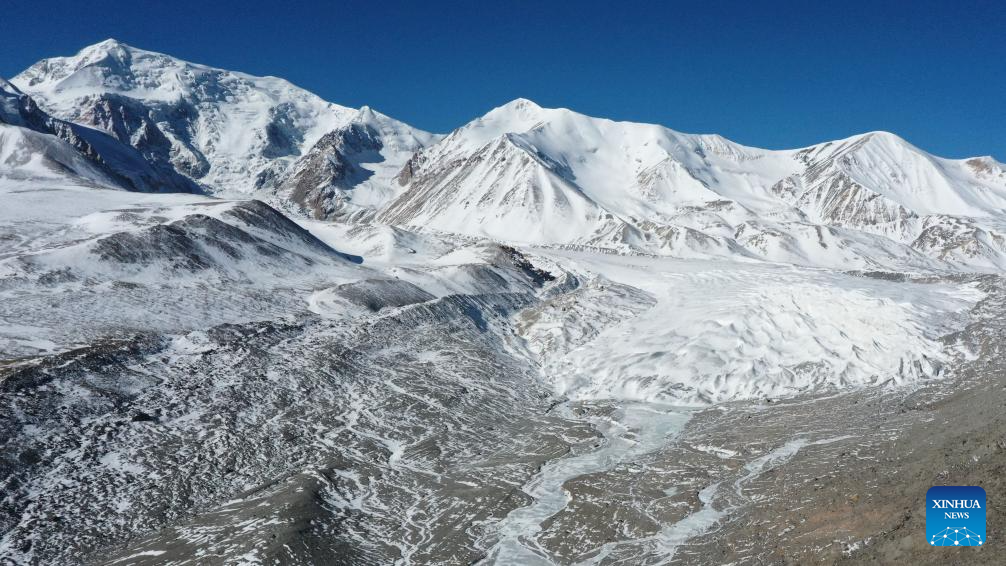
An aerial drone photo shows a glacier on Mount Anyemaqen in the Golog Tibetan Autonomous Prefecture of northwest China's Qinghai Province, March 8, 2023. (Xinhua/Chen Jie)
Copyright © Xizang Daily & China Xizang News All rights reserved
Reproduction in whole or in part without permissions prohibited
Index Code: 藏 ICP 备 05000021 号
Producer: Xizang Daily International Communication Center